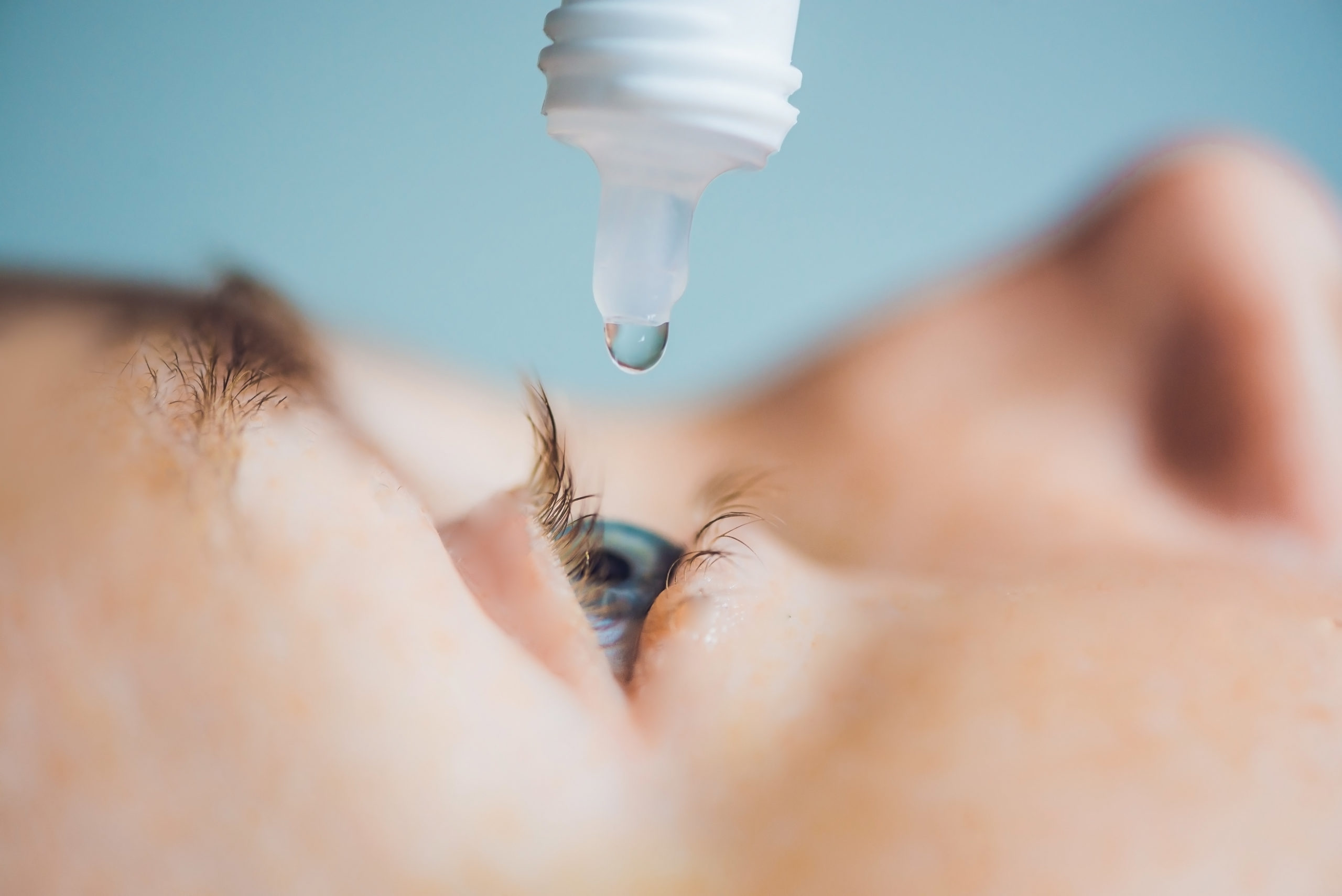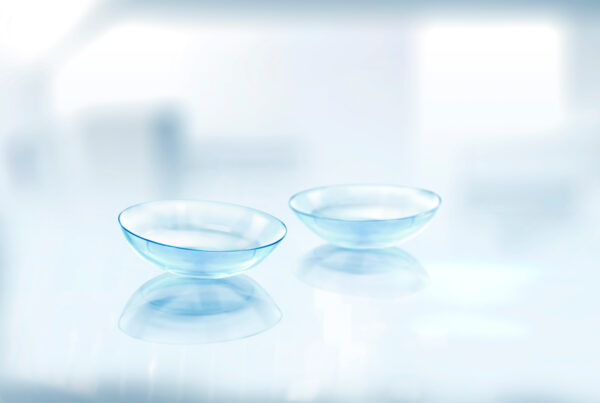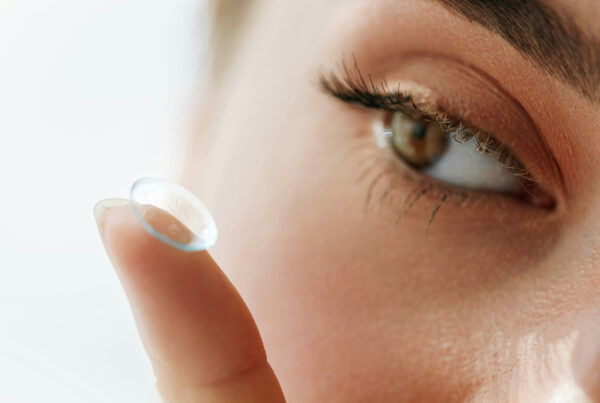
Dry eye disease, eye allergies, and pink eye are uncomfortable conditions that include many similar symptoms, such as burning, swelling, and redness. As a result, discerning between them is a monumental task. Diagnosis requires the skill of an experienced dry eye specialist, who can identify the root cause and treat it accordingly.
Symptoms
Eye Allergy Symptoms
Also known as allergic conjunctivitis, eye allergy symptoms can be seasonal (such as in the spring and fall) or perennial (year-round). The most common symptom of eye allergies is severe itchiness. Often, itching creates a strong need to rub the eyes, producing an itch-rub cycle that can lead to eyelid swelling and redness.
Pink Eye Symptoms
Epidemic KeratoConjunctivitis (EKC), commonly known as pink eye, is highly contagious in the spring and fall, aligning with seasonal allergies. Often spread through schools, pink eye is passed from person to person via eye, oral, or nasal secretions.
Common symptoms of pink eye include swelling of the lymph nodes in front of the ears, redness, watery discharge, irritation, and pain. The viral infection does not respond to antibiotics, making it difficult for patients to tell whether their symptoms describe allergies or pink eye.
Dry Eye Disease Symptoms
Patients with dry eye disease frequently present symptoms similar to that of allergies and pink eye. Those with dry eye disease don’t have enough or decent quality tears to keep their eyes lubricated. Therefore, the extreme dryness associated with dry eye disease can create a burning sensation in addition to redness.
Causes and Treatment
What Causes Eye Allergies?
Nearly one-fifth of the American population suffers from eye allergies. When the ocular surface is exposed to environmental allergens, antibodies are produced to fight them. As the primary antibody, histamine, is released, allergic reactions will soon follow.
Many allergy sufferers experience seasonal symptoms, which typically heighten during the spring and fall. The month or season where symptoms arise is significant when determining the cause and course of treatment.
For example, patients who note itchiness, redness, and swelling outdoors during the springtime are likely allergic to tree pollen or grass. On the other hand, those who experience symptoms outside in the fall may be allergic to ragweed pollen.
The other type of ocular allergy occurs year-round. Perennial allergies present symptoms when the eyes are exposed to indoor environmental factors such as dust, pet dander, molds, or fragrances. As a result, a constant aggravation distinguishes perennial from seasonal.
What Causes Dry Eye Disease?
Just as there are several triggers for ocular conjunctivitis, so are there differing causes for dry eye disease. Most cases of dry eye are due to a deficiency within the tear film’s lipid, aqueous, or mucin layer. However, inadequate tears are either due to excessive evaporation or ineffective production.
Certain factors contribute to the root cause of a patient’s dry eye disease. They include:
- Gender
- Age
- Dehydration
- Excessive screen time
- Underlying health conditions, such as lupus, rheumatoid arthritis, or Sjrogren’s syndrome
- Environmental factors, such as low humidity
- Medications with ocular drying side effects
- Past eye surgeries, such as LASIK
Many individuals attempt to self-diagnose their eye condition and often believe their symptoms result from allergies or pink eye. Although millions of Americans suffer from allergies, visiting an eye specialist for a firm diagnosis and appropriate treatment is crucial. Dry eye disease, left untreated, can lead to vision problems, so be sure not to dismiss similar symptoms.
Eye Allergy Treatment
Your allergies’ cause determines treatment. Although you can’t avoid allergens in their entirety, the best way to prevent symptoms is to limit your exposure. Depending on your trigger, you may have to spend more time indoors on days when the pollen count is higher. In other cases, you might need to avoid entering your friend’s house to protect yourself from their cat’s dander.
There are various over-the-counter products on the market to treat allergies. Although you may undoubtedly take an oral antihistamine, such as Claritin or Allegra, be aware of their ocular drying side effects. The most effective medication treatment for eye allergies is a topical, preservative-free eye drop solution that works against all symptoms, as it reaches the affected tissue directly.
Pink Eye Treatment
Like ocular allergies, pink eye treatment aims to reduce and relieve symptoms. Common at-home methods include the following:
- Preservative-free artificial tears
- Applying cold or warm compresses
- Cleaning the eyelids with a wet cloth
The viral infection will often gradually resolve on its own through symptom management. Typically, it affects one eye and then spreads to the other. You’ll feel better after two to three weeks.
Dry Eye Disease Treatment
Dry eye treatment typically begins with a thorough explanation of the root cause. For example, if your optometrist finds that your condition is due to reduced blinking, they’ll advise you of its importance in lubricating your eyes.
Likely, your reduced blinking directly correlates with certain behaviors, such as prolonged screen time. When that’s the case, your optometrist will additionally suggest methods of modifying behaviors.
Other environmental factors, such as low humidity, can cause dry eye syndrome. For those experiencing symptoms due to dry air, purchasing a humidifier for your home can make all the difference. Smoky air can also lead to dry eyes, so patients exposed to smoke daily should consider ways to avoid subjection.
When dry eye disease is caused by an underlying health condition, past procedure, age, gender, or medication, your doctor may recommend artificial tears. If the symptoms are severe, certain prescribed eye drops can provide relief. Further, inserting punctal plugs may be necessary when eye drops don’t help.
Those who have modified behaviors and limited exposure to no avail may also be recommended artificial tears. It’s vital to seek preservative-free eye drops to avoid drying the ocular surface even more.
The Difference Between Pink Eye, Dry Eyes, and Allergies
Although allergies, pink eye, and dry eyes present similar symptoms and triggers, they are entirely different. Certain telltale signs can help optometrists identify your circumstances.
You likely have allergies if your symptoms occur during the spring and fall. Additionally, those who suffer from severe itchiness also experience allergies. You probably have pink eye if your eyes produce a watery discharge in addition to itchiness and redness.
Conversely, if you identify with any caustic factors, such as underlying health conditions, you probably suffer from dry eye disease. Further, those exposed to environmental conditions, including excessive screen time and low humidity, also likely have dry eye disease.
Since the overlap between pink eye, ocular allergies, and dry eye disease is apparent, you must visit a trusted specialist. Optometrists can perform specific testing, apply their knowledge to identify your condition and its cause and create an individualized treatment plan. If you’re experiencing any symptoms of allergies or dry eye disease, contact your eye doctor immediately to find relief.
Visit Our St. Louis Optometrists Today for Relief
The specialists at the Dry Eye Institute of St. Louis, a part of SureVision Eye Centers, are highly trained and possess the skills to distinguish whether you have pink eye, ocular allergies, or dry eye disease. Further, the team utilizes industry-leading technology and methods to locate the root cause of your condition and provide a comprehensive, personalized treatment plan.
Although the Dry Eye Institute of St. Louis specializes in the cause analysis, diagnosis, and treatment of dry eye syndrome, you can receive help for pink eye and allergies from the SureVision team. If you’re experiencing symptoms of dry eye disease, pink eye, or allergies, don’t hesitate to schedule an appointment with Dr. Bourn at the Dry Eye Institute of St. Louis. Complete the online form or call today to get started.



